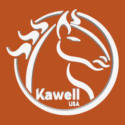The graduation ceremony is over. That unforgettable feeling of finishing the first horse without the instructor’s help is still fresh. The former strangers who became close friends during the long days of learning and practicing must now go their separate ways. It’s time to head into the real world of farriery. Where do you start?
To build loyal customers, look for opportunities to educate your clients about footcare. This proves important when encountering clients who question the amount they pay for footcare. Rather than getting defensive, I like to provide insight. Most clients have little understanding of what it costs us to shoe their horses.
I never lost a debate with a client over pricing if I took the time to explain what contributes to my cost. I find that if you take the time to explain costs when you enter into the relationship with a client, then pricing won’t become an issue. Instead, we typically wait until there is a problem to have this conversation with clients.
With clients you already have on your books, don’t wait until they ask about costs. For example, each year in a client newsletter, I share some information on my annual costs in shoeing their horses. This summary is on my clients as a whole, not on individual horses.
Farrier Takeaways
- Clients typically have little understanding of what your expenses are, so explaining these can help them understand your rates.
- Even a seemingly insignificant cost like an individual nail adds up over a year when you consider discarded nails.
- Don’t wait until there is an objection to discuss your expenses with a client. Explain it in a proactive manner.
Looking Back
I want to share some numbers relative to my practice. These are numbers few of us regularly consider. This is an example for marketing and educating our clients, but also the equine industry.
Most manufacturers have a general idea of the numbers I’m sharing with you. They know the importance of these numbers and do all they can to use these numbers to improve their products and market them. I feel numbers such as these are not used enough by farriers for client education. Sharing our numbers can be a powerful way to educate clients and reinforce our competence. How else can using numbers like this help?

Summarizing the amount of nails you use over a year or career is a way to alert clients to the many costs included in shoeing their horses.
Although I shod my first horse alone in 1967, the early years of my career don’t represent consistent numbers. However, after a few years, my numbers were much higher than the numbers I’ve used in the following totals. For easy calculations, let’s consider the following conservative numbers. I only considered full shoeings to make the numbers easier to calculate.
- Just trims alone without shoes were not included.
- Half-shoeings, such as shoes on front and only rimmed hinds, are not included either.
- These numbers may be low or high compared with your experience. After reading this, please calculate your own numbers and see how they stack up.
- Five horses a day multiplied by 5 days a week equals 25-head per week.
- 25-head a week, multiplied by 50 weeks per year equals 1,250 horses shod per year.
- 1,250 horses shod per year, multiplied by 50 years shoeing (in 2017) equals 62,500 horses shod. And 62,500 horses shod means I’ve trimmed and balanced at least 250,000 feet. And that is just on those shod all-around.
- Next, look at what goes into shoeing a horse, only considering the nail.
- Five horses a day with 24 nails per horse equals 120 nails per day.
- 120 nails a day times 5 days a week equals 600 nails each week.
- 600 nails times 50 weeks equals 30,000 per year.
- 30,000 nails a year times 50 years equals 1.5 million nails in 50 years.
“Most clients have little understanding of what it costs us to shoe their horses…”
Over half-century, this does not include bent, pulled or discarded nails. Hard hooves, poor nail placement, poor quality walls and untrained horses are just a few reasons for discarded nails
We need new ways to engage our clients. Working numbers like these into conversations with clients show competence and longevity, as well as the costs we incur with each horse.







